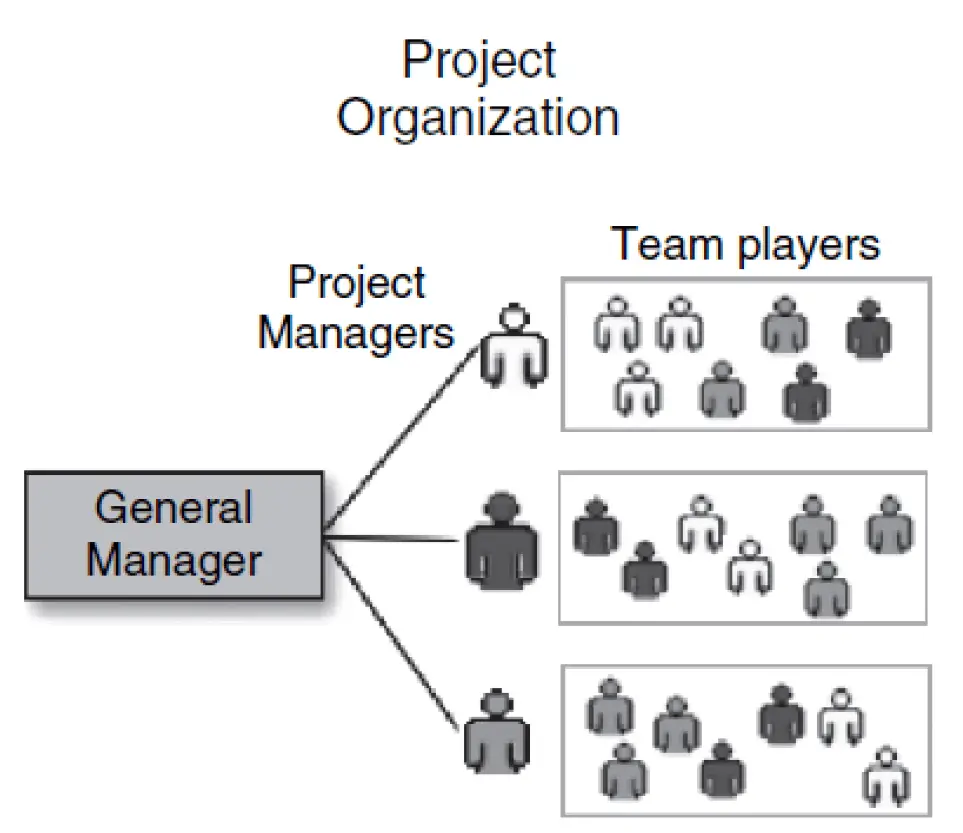Successful firms must organize their product development staff to implement the process in an effective manner. In this article, we will discuss the different organizational Structures used for product development and offer guidelines for choosing among these options.

Organizational structures
In general, Organizations Are Formed by Establishing Links among Individuals. A product development organization is a scheme by which individual designers and developers are linked together into groups.
The links among individuals may be formal or informal. There exist different types of such links or relationships, those are
Reporting relationships in Organization
Reporting relationships give rise to the classic notion of supervisor and subordinate. These are the formal links most frequently shown on an organization chart.
Financial arrangements in Organization
Individuals are linked by being part of the same financial entity, such as a business unit or department within a firm.
Physical layout in Organization
Links are created between individuals when they share the same office, floor, building, or site. These links are often informal, arising from spontaneous encounters while at work.
Any particular individual may be linked in several different ways to other individuals. For example, an engineer may be linked by a reporting relationship to another engineer in a different building, while being linked by physical layout to a marketing person sitting in the next office. The strongest organizational links are typically those involving performance evaluation, budgets, and other resource allocations.
Regardless of their organizational links, particular individuals can be classified into two different ways. According to their function and according to the projects they work on.
- Function-based Organization
- Project-Based Organization
Function-Based Organization

- Individuals, working on one or a limited number of tasks each, are grouped according to their technical expertise.
- Individuals with similar technical backgrounds form the basic building blocks of the formal reporting lines.
- Integration with other functions is a tedious task.
- Because people are motivated by the need to deepen their knowledge base in certain areas, these groups face tremendous difficulties when an attempt to integrate their findings into a specific product to address a specific market need.
Project-Based Organization

- Individuals of different technical/functional expertise are grouped into an organizational subunit responsible for one product or service (or potentially a limited set of closely related products/services).
- Although from different technical/functional backgrounds the group builds a group identity, their focus is to create a product.
- The team leader takes the customer’s perspective and focuses the team on defining and creating a cohesive product or service.
Project organization focusses on the result, the product itself while neglecting building technological excellence in the long run.
Functional organizations, in contrast, focus on building technological excellence, while neglecting the product/ customer.
Choosing an Organizational Structure
The most appropriate choice of the organizational structure depends on which organizational performance factors are most critical to success. Functional organizations tend to breed specialization and deep expertise in functional areas. Project organizations tend to enable rapid and effective coordination among diverse functions. Matrix organizations, being hybrids, have the potential to exhibit some of these characteristics. The following questions help guide the choice of organizational structure:
- How important is cross-functional integration? Functional organizations may exhibit difficulty in coordinating project decisions that span the functional areas. Project organizations tend to enable strong cross-functional integration because of the organizational links of the team members across the functions.
- How critical is cutting-edge functional expertise to business success? When disciplinary expertise must be developed and retained over several product generations, then some functional links are necessary. For example, in some aerospace companies, computational fluid dynamics is so critical that the fluid dynamicists are organized functionally to ensure the firm will have the best possible capability in this area.
- Can individuals from each function be fully utilized for most of the duration of a project? For example, a project may require only a portion of an industrial designer’s time for a fraction of the duration of a project. In order to use industrial design resources efficiently, the firm may choose to organize the industrial designers functionally, so that several projects can draw on the industrial design resource in exactly the amount needed for a particular project.
- How important is product development speed? Project organizations tend to allow for conflicts to be resolved quickly and for individuals from different functions to coordinate their activities efficiently. Relatively little time is spent transferring information, assigning responsibilities, and coordinating tasks. For this reason, project organizations are usually faster than functional organizations in developing innovative products. For example, consumer electronics manufacturers almost always organize their product development teams by the project. This allows the teams to develop new products within the extremely short periods required by the fast-paced electronics market.
Conclusion
We have discussed the Organizational structures and the links among the individuals in Product Development, also guidelines for Choosing an Organizational Structure. Let us know if you have any further thoughts on this topic.

Leave a Reply